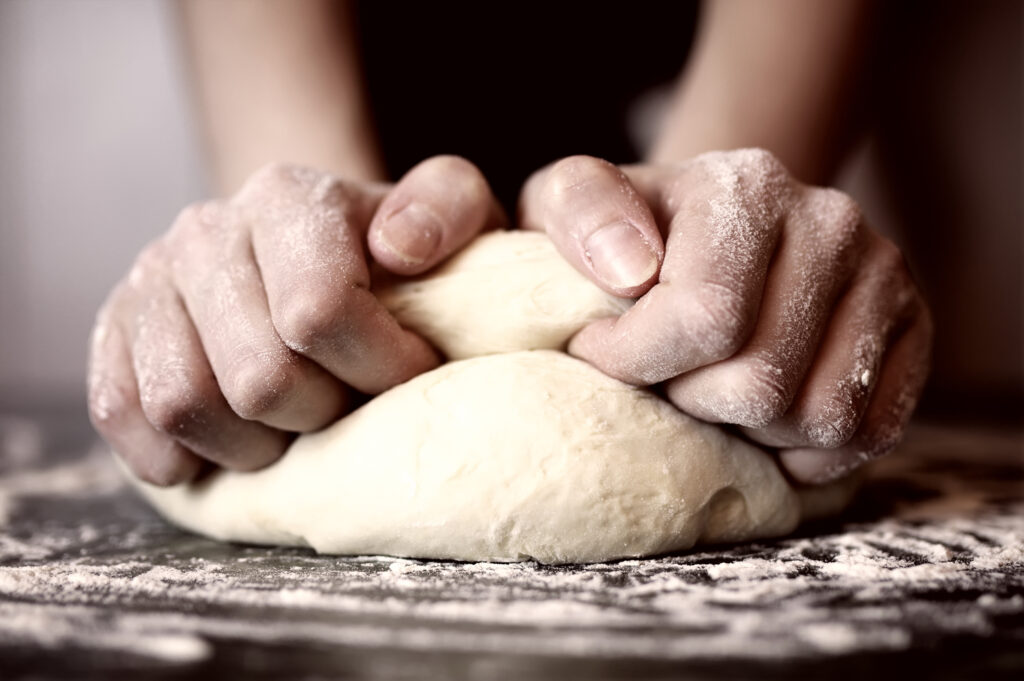What is the maturity
Maturation is a chemical process fundamentalbut the invisible, to which we must reserve the right attention to get a leavened with excellent digestibility, taste good and smells pleasant. But how does the maturation of the pizza?
During processing of the dough it creates a compound-complex that undergoes a series of transformations before having reached a state of optimal and to be ready for cooking.
The maturation is a crucial time to bring to the table a tasty pizza.
Already during the kneading is a first transformation: the yeasts convert the sugars and form carbon dioxide, this phase will earn the pizza color and flavor during cooking. The fermentation takes place during the mixing, while the dough continues to mature from the first rising up to the cooking.
Specifically, when the dough goes on maturing, is the decomposition of complex structures in simple elements, thanks to the action of some specific enzymes. In particular, lipase, and lippogenasi activate the idrolizzazione of lipids, alpha-and beta-amylase allow the splitting of starch into sugars.
It is a process that requires different times depending on the type of ingredients used and the conditions under which the mixture is left to rest. Beware, however, not to confuse maturity with the rising of the dough.
Differences with the rising
Fermentation and maturation are two separate processes that take place in different ways and lead to different results, even if the actors are the same: yeast, gluten, and carbon dioxide.
The process of proving it is more widely known, and that is what is awaited with trepidation, because it informs us if the dough is successful or not. When the dough inflates increases of at least twice its initial volume allowing it to break it up into pieces and give life to a variety of leavened dough. This change is due to the fermentation of the yeast, which converts sugars into carbon dioxide. Carbon dioxide is a gas that will continue to expand, up to the cooking thanks to the heat. To properly handle times of rising allows to precisely this gas to be incorporated in the structure of glutencalled the mesh resulting gluten structure means. At this point you are used to form the cells, that is, those bubbles that we find, then, inside of the cooked product.
You will know that the dough will have developed a good mesh the resulting gluten structure means when will elastic, durable and does not crack.
The timing of maturation and increases it is said that they match, but they can be synchronized by choosing the flours with the right features for the preparation that you have in mind. In addition, the formation of a well-made is also obtained thanks to the working with pasta by the folds of reinforcement, and the procedure to be repeated at regular intervals during the period of the rise.
Ripening time
It has already been said, the proper maturation of the dough can only happen if you take into account the type of flour and how this develops the gluten during kneading. This quality is called force and varies depending on the types: there are, in fact, strong flour and flour weak.
From the strength of the flour depends on how much water it absorbs, and how it holds on to the carbon dioxide, therefore we must pay close attention to the hydration of the dough and its rising to reach the optimal ripening. The flour weak ripen before but have a low index rising, while those that are strong, in addition to having a high protein content, absorb a high percentage of water and have a high rise.
The first, among which include those derived from cereal grains such as oats, rice and barley, are used for foods that require a low-rise, for example, dry pastries.
The strong flourfor example, those of grain, hard or soft, are the preferred ones for the realization leavened as pizza, bread and focaccia. The hours of the maturation of these flours, which correspond to those of yeast, it takes between the3 and 6 hours depending on the strength of the flour used.
Long maturation
If you're thinking of making a delicious pizza in a pan, perhaps you should evaluate the opportunity to try a pizza long maturation.
There are, however, some very important things to know about this procedure. First, you need to review the quantities of the basic ingredients. Must be reduced, in fact, the the amount of yeast and it goes slowed down the process of proving.
There are many ways of making a pizza for long maturation. You can try to mix in and knead in the most widespread by mixing the flour, water, yeastsalt and oil, then let it rise pizza dough inside of a bowl, surrounded by the film 12 hours inside the fridge. Or you can use the yeastfollow the same procedure, keep it in the fridge for 72 hours and then work it again preparing for the long-awaited draft.
If you want to experience something different, an alternative could be the pre-mixture, called poolish. It is a mix of a lot of fluid that sees mixed water, flour, yeast and left to ferment at room temperature from 2 to 12 hours. At the end of the rise of this compound, will be added, finally, other flour, water, olive oil and salt. This time the dough should be worked art and left to rise according to the time required by the flour used.


